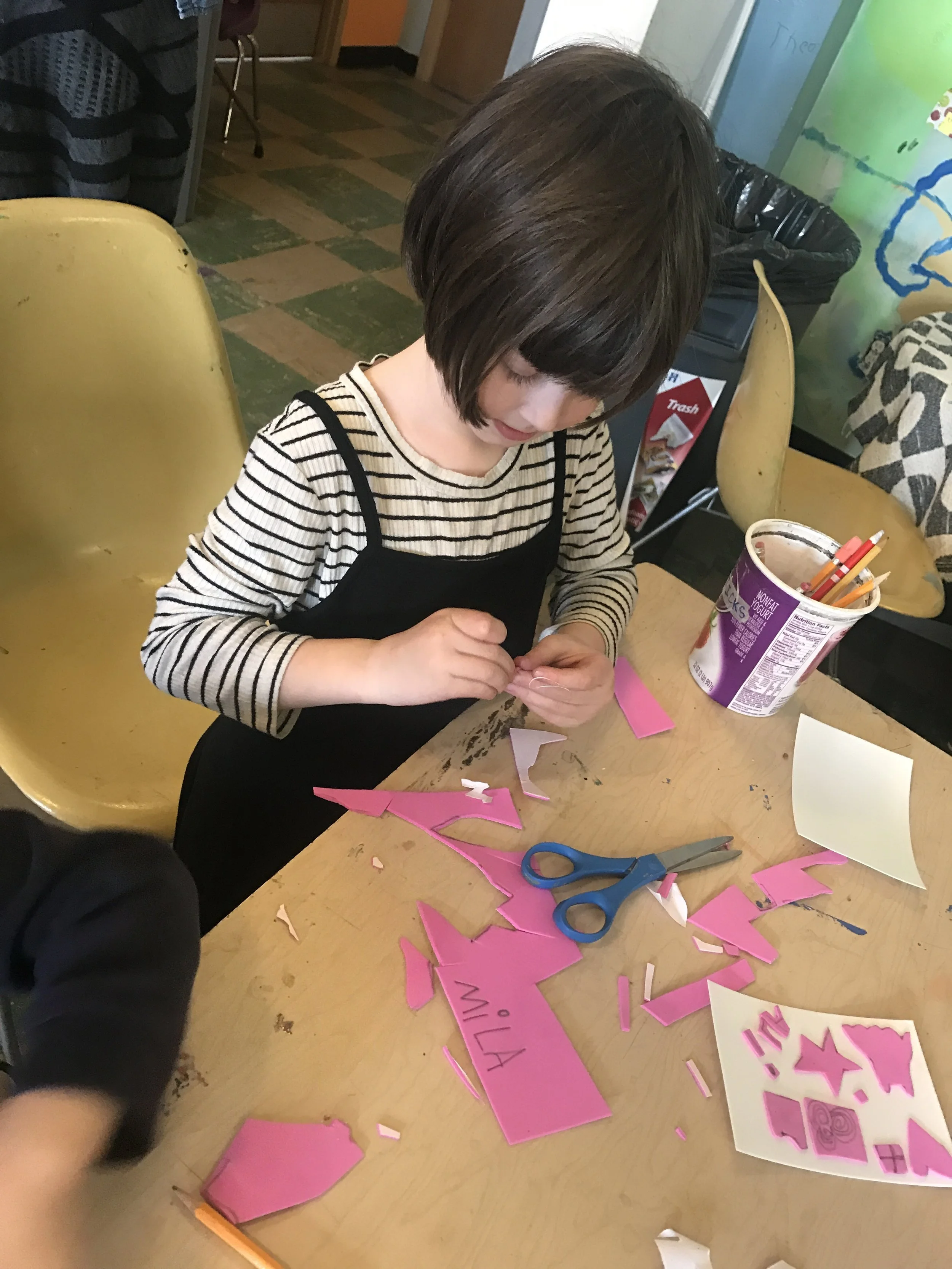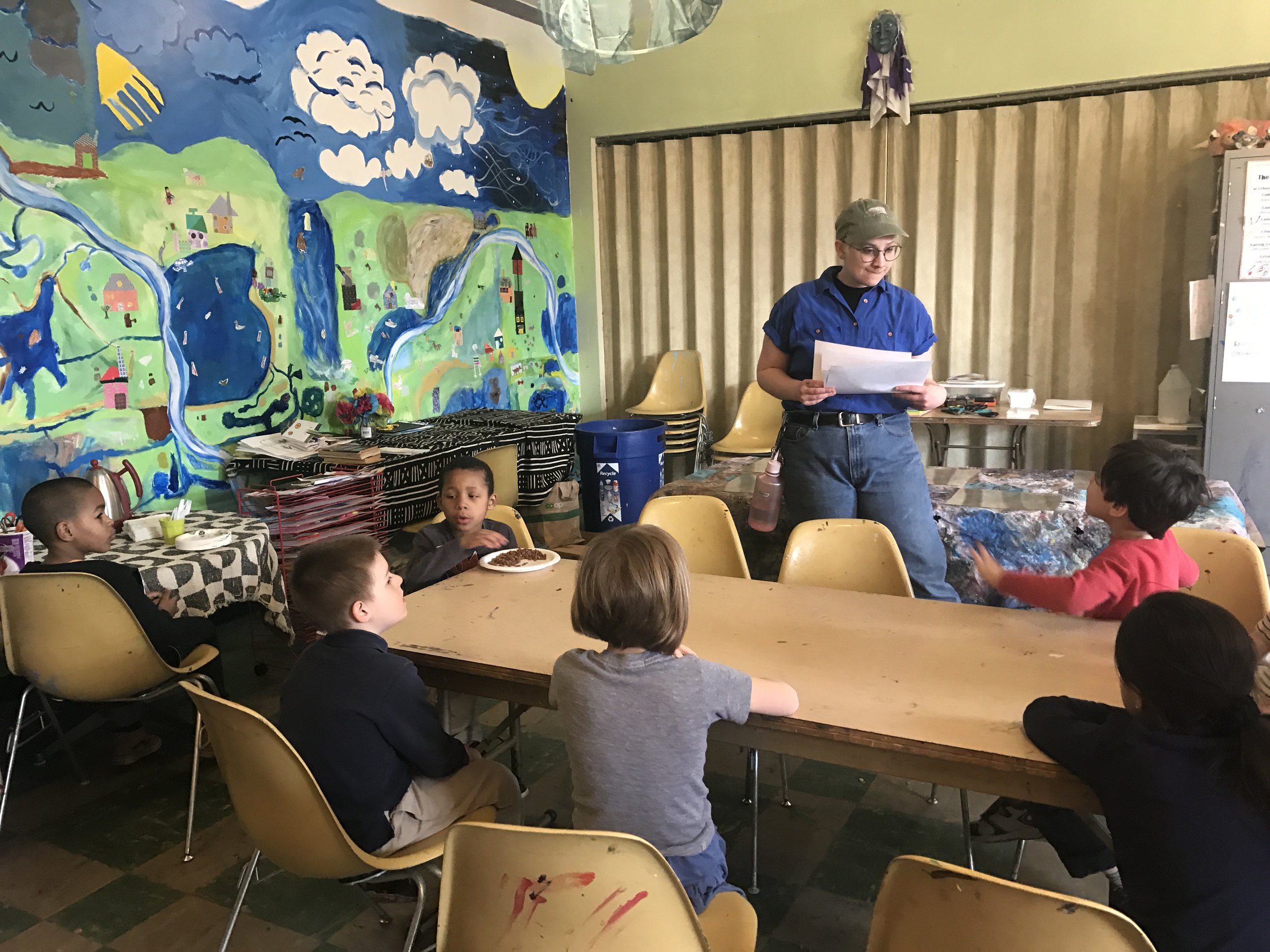Name of Project: Pattern Your Life!
Grade Level or Age of Participant: 5-6 years
School, Teacher and Classroom: Urban Arts Academy, Katie Swenson
MCAD Teaching Artist: Nancy Hicks
Visual Arts Content or Standards
K-3, 1. Artistic Foundations, 0.1.3.5.1 Demonstrate understanding of the personal, social, cultural and historical contexts that influence the arts areas.
K-3, 2. Artistic Process: Create or Make, 0.2.1.5.1, Create original two- and three- dimensional artworks to express ideas, experiences or stories.
Overview of Project
Students create patterned relief blocks to print their own design for a blank book cover. They ideate on the favorite things they observe in their day to day lives and use sticky back foam to cut their shapes and patterns out, stick to foam core and then print it onto a sheet of paper that will be used to create a journal or notebook with yarn binding.
“Big Ideas”/ Essential QUESTION(s)
Where do we see patterns in our everyday lives? Where do we see pattern as important to our family and friends? What does pattern mean to us?
Student Outcome Objectives
Students will:
Recall patterns they have observed in their day to day lives
Plan to create a pattern based on something they see everyday that is important to them.
Students will create a pattern that will become part of an object that they can use in their everyday lives.
Prior Knowledge
They must know how to use scissors and have a “favorite” everyday object.
Examples of Artwork
Prepare multiple exemplars to the prompt, along with examples of everyday patterns, cultural patterns, and patterns of a more non-traditional nature (wallpapers, illustrative) as hard copies.
Additional Resources
http://www.themeasuredmom.com/simple-ways-teach-patterns-preschoolers/
Images to print of patterns from across the globe
Assessment
If the students participate and create a repeated image, the project will have been partially successful. If they can connect it to their daily life, then it will be more so. Quality work will be a finished booklet with a pattern on the front, that the student is happy with.
Materials 10-15 students, 4.25”x5.5” booklets
· Sticky back foam paper, (enough for each student to have at least two sheets)
· Small sheets of foam core (10-12)
· Scissors
· Water Based ink
· Brayers (5-6)
· 8.5x11 Paper (heavier stock) (15-20 sheets)
· 8.5x11 Paper (for book pages)
· Yarn
· Hole punches
· Some children may want pencils to draw their shapes first.
Room Set
Two tables, one will be used for cutting and designing the blocks—with the sticky back foam, foamcore, and scissors. The other for five printing stations set up, one sheet of plexiglass and one brayer at each station.
Drying rack
Learning Activities and Timing
Day One – Design and Printing
(Sticky back foam, foamcore, scissors, waterbased ink, brayers, heavier stock paper)
1. Introduce the project, discussing the importance pattern has in cultures across the globe, inquiring where they see pattern in their everyday lives--initiate a conversation. (5 min)
2. Show the students my example, describing how the example has to do with defining myself through everyday objects I enjoy and how they will make their own. (5-10 minutes)
3. Demo making the block. (5 min)
4. The students will make their block. (10 min)
5. Demo Printing, How to keep the paper and themselves and clean, where to and how to put down a brayer. (5 min)
6. Students move to print stations and make their prints (10-15 min)
Day two - Book Binding (Paper for the inside of the book, yarn, hole punch, their prints)
1. Reintroduce project. What did we do last time? What did you make? Why? (5 min)
2. Show your book and explain. (5 min)
3. Demo book binding. (5 min)
4. Walk them through book binding step by step with adult assistance. Make certain you can see them all as they work. (15-20 min)














